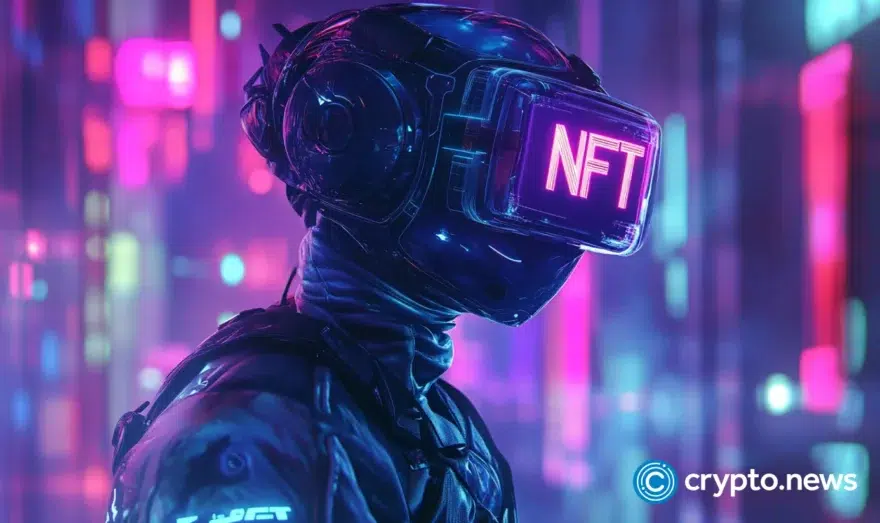NFTs will remain a permanent fixture in society | Opinion

Disclosure: The views and opinions expressed here belong solely to the author and do not represent the views and opinions of crypto.news’ editorial.
The non-fungible token (NFT) bubble burst long ago, yet these versatile digital assets are proving to be more challenging to eradicate than many think. We may be at the thralls of another severe downturn, with trading at an all-time low even for blue chip NFT projects compared to last year. Still, one thing is for sure: despite the boom and bust and many naysayers, the more extensive utility of NFTs as an innovative business tool will become and remain a permanent fixture in society.
That’s why legacy brands like Nike and Tiffany & Co. integrate NFTs into their business plans. Ultimately, collaborations with brands, creators, and large companies will enhance the market sentiment. In other words, widespread adoption will follow as more world-leading brands bite the bullet first and simplify it for the rest of the web3 and non-crypto world.
NFTs started as art, but that isn’t how they will thrive
Gary Vee was onto something when he said the inflated market and people trying to make a quick buck are the primary reasons behind the NFT spaces’ slowdown. However, despite the sharp drop and the current macroeconomic climate, good projects such as Crypto Punks and Ether continue to be in high demand with strong community engagement. This is due to their fundamentals, solid project path, and ability to serve a specific need—which is true whether we’re talking about a plain collectible or NFT that has utilities.
It’s not that the industry has run out of good use cases for NFTs, but rather that the web3 projects leading them are ironing out the kinks in their roadmap and still realizing the overall growth of their project. While others are caving to competitor pressure, as seen by the recent royalties slash by OpenSea. NFTs will find their niche and introduce new financial market dynamics as tokenization expands and provides more utility for luxury brands and the gaming, entertainment, music, and property industries. These could include film and media rights, full and fractional ownership, which will make investments more inclusive, time-sharing, ticketing, memberships, ownership transfers, and more.
The art market may have been NFTs’ coming out party, and the digital art renaissance could still make significant changes in the creative sphere; however, there must be more than NFT drops and creator fees—there need for support. For starters, web3 projects should find new ways to enhance access for global audiences and support for artists and creators and usher in an era of fairer compensation for creators and intellectual property owners. However, in the movie industry, for example, this will only be possible once the sector guarantees enough protection around IP.
NFTs are underestimated but will be part of every industry’s ecosystem
Funders, stakeholders, and venture capitalists want to see more than a solid roadmap; they want knowledgeable operators with a strong track record of commitment to the specific project and who understand the push and pull factors of changing customer behavior. Beyond this, crypto and non-crypto natives’ ears will perk up as engagement between industries and on-chain and off-chain initiatives becomes more prevalent, something that was lost and suppressed as sectors and expertise became siloed.
Regarding creators, we’ve been speaking about web3 creating new jobs and supporting new ways of work, but independent creators have yet to soak up the fruits of their labor. If you think about the music industry, for instance, for NFTs to help up-and-coming artists, we need more well-known and experienced artists to bring their creative flair and expertise to the table. Also, as more companies focusing on protecting and supporting creators on this journey emerge, and further regulatory clarity is implemented and standardized, industries will become more open to NFTs and the risks involved. It’s challenging for people to engage in spaces when they can do something one day but perhaps not the next, which is where government support would prove invaluable.
As mentioned, another industry that would benefit from the application of NFTs, if done by the right visionaries with a clear purpose, is real estate. These projects can only be run by someone with an inkling to create with knowledge of running a business or encouraging lasting demand. This industry is haunted by a convoluted process that has yet to arrive in the 21st century, which is where NFTs come in as a counterfeit-proof mechanism. Ultimately, it’s about eradicating centuries-old practices of administrative processes and bridging the physical and digital worlds together through digital twins. For example, people who could never own a home before could now vouch for fractional NFTs and land trading NFTs.
What goes up doesn’t always come down
The unproven financial viability of the NFT market is still in question, but forecasts predict a compound annual growth rate of 34.2% between now and 2030. So, while NFT pessimism may be at an all-time high, we live in a digital society where we cannot ignore the benefits of this tech due to its immature phase. Creating continuous hype and adapting to modern trends will account for part of the industry’s growth spurts, but projects will need to strike that precise balance between much-needed innovation and responsibility.












